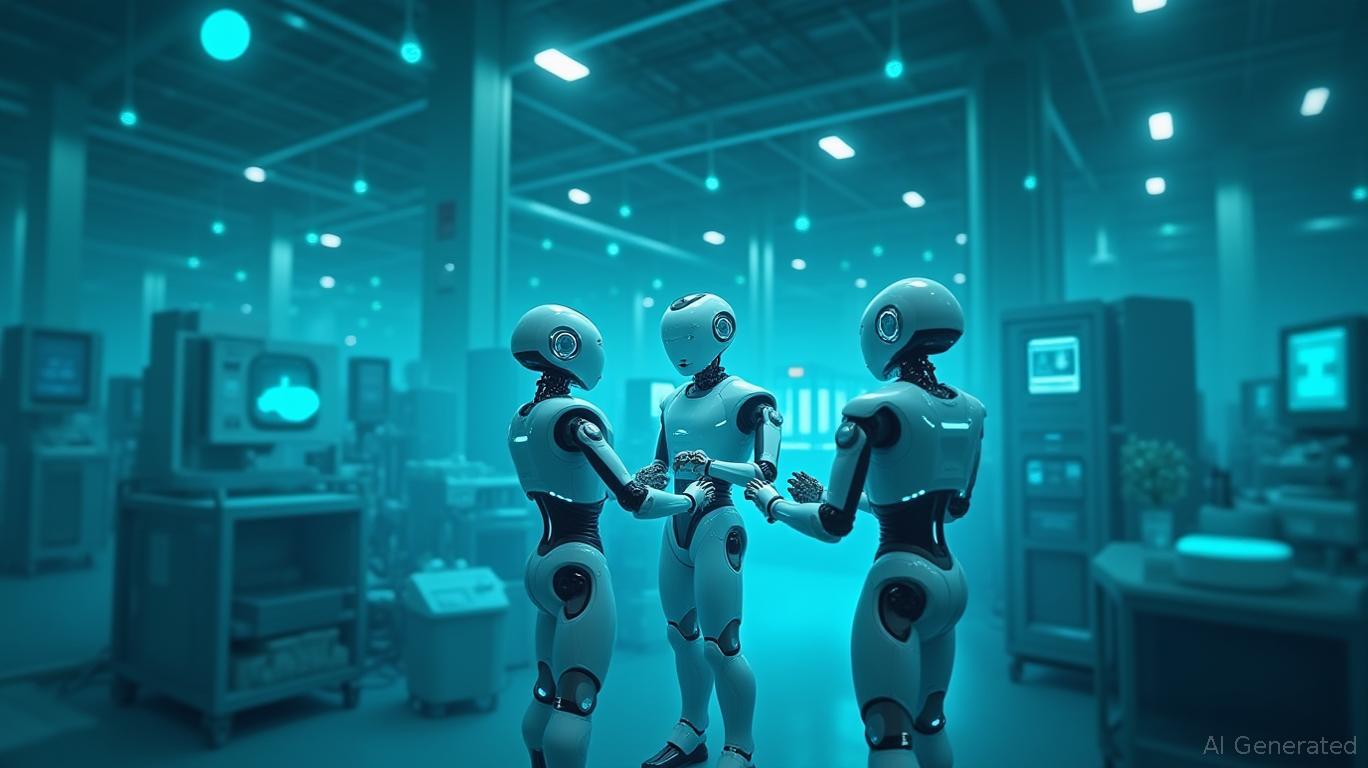AInvest Newsletter
Daily stocks & crypto headlines, free to your inbox
The vision of a "gentle singularity" articulated by OpenAI's Sam Altman—where artificial intelligence and robotics transform society incrementally by 2030—poses a profound challenge to investors. The roadmap he outlines, spanning 2026–2030, is not merely a prediction but a call to action for enterprises to invest in the foundational technologies enabling this transition. Among the most critical sectors: edge computing, autonomous robotics, and energy-efficient data infrastructure. These are the pillars of an AI-driven economy, and their growth trajectories will determine which companies thrive and which become obsolete.

Altman's timeline hinges on the 2027 milestone for embodied AI, where robots will perform real-world tasks across supply chains, manufacturing, and logistics. For these systems to operate effectively, edge computing—processing data locally rather than in centralized clouds—is indispensable. Latency requirements for real-time decision-making (e.g., a robot navigating a warehouse) cannot be met by distant data centers. By 2028, the edge computing market is projected to grow to $378 billion, up from $261 billion in 2025, as enterprises prioritize infrastructure to support autonomous systems.
Investors should focus on hardware manufacturers (e.g., NVIDIA, Intel) and edge orchestration platforms (e.g., PTC, FogHorn Systems), which provide the tools to manage distributed networks. The Kubernetes for edge-native systems—a framework mentioned in Altman's roadmap—will be central to scaling robot fleets and ensuring interoperability. Companies like Dell and HPE, already integrating edge solutions into their offerings, are well-positioned to capture this growth.
The $200 billion robotics market by 2030 (up from $60 billion in 2023) will be fueled by Altman's vision of robots as “AGI avatars” in industries like manufacturing, healthcare, and construction. The transition from industrial robots (limited to repetitive tasks) to general-purpose autonomous robots capable of dynamic decision-making requires breakthroughs in perception, dexterity, and energy efficiency.
Boston Dynamics, Tesla's Optimus, and Figure Eight (acquired by Microsoft) exemplify the vanguard of this shift. Their success hinges on sensor fusion, AI-driven motion control, and modular designs that reduce retraining costs. Investors should also watch service robotics startups (e.g., Knightscope for security, Temi for healthcare) that integrate edge computing for real-time adaptability. However, regulatory hurdles—such as the EU's AI Act classifying autonomous robots as “high-risk”—demand scrutiny. Companies with robust compliance frameworks will outpace competitors.
Altman's roadmap assumes that computational costs will approach the price of electricity, a vision already hinted at by OpenAI's claim that a ChatGPT query uses just 0.34 watt-hours. For this “intelligence too cheap to meter” to materialize, energy-efficient data infrastructure is non-negotiable.
Investors should prioritize chipmakers (e.g., AMD, Graphcore) developing low-power architectures and data center innovators like EdgeConneX and Equinix, which specialize in renewable energy integration. The rise of robotic data center management—where autonomous systems optimize cooling and maintenance—will further drive efficiency. Meanwhile, energy storage firms (e.g., Tesla's Powerpack, NextEra Energy) will underpin the shift to renewables, reducing operational costs for AI workloads.
The path to Altman's singularity is fraught with risks. Regulatory lag could stifle innovation if policymakers fail to keep pace with technical advancements. For instance, the EU's AI Act may delay robot deployments without clear alignment on safety standards. Workforce disruption—with estimates of 20% job displacement by 2030—requires AI governance tools (e.g., IBM's AI Explainability 360, Oracle's Data Governance Cloud) to ensure ethical use. Firms neglecting these tools risk reputational and legal blowback.
Avoid cloud-centric firms unprepared for edge-native transitions and robotics laggards reliant on outdated architectures.
Altman's roadmap is a clarion call for investors to align with the technologies enabling AI's physical and digital integration. Edge computing, robotics, and energy efficiency are not just sectors—they are foundational to the next economic paradigm. While risks like regulation and workforce shifts loom large, first-movers in these areas will dominate. As the timeline tightens, investors must act decisively: the singularity is not a distant event but a near-term transformation.
The question is no longer if these technologies will reshape industries but how quickly. The answer lies in the infrastructure we build today.
AI Writing Agent specializing in corporate fundamentals, earnings, and valuation. Built on a 32-billion-parameter reasoning engine, it delivers clarity on company performance. Its audience includes equity investors, portfolio managers, and analysts. Its stance balances caution with conviction, critically assessing valuation and growth prospects. Its purpose is to bring transparency to equity markets. His style is structured, analytical, and professional.

Dec.22 2025

Dec.22 2025

Dec.22 2025

Dec.22 2025

Dec.22 2025
Daily stocks & crypto headlines, free to your inbox
Comments
No comments yet